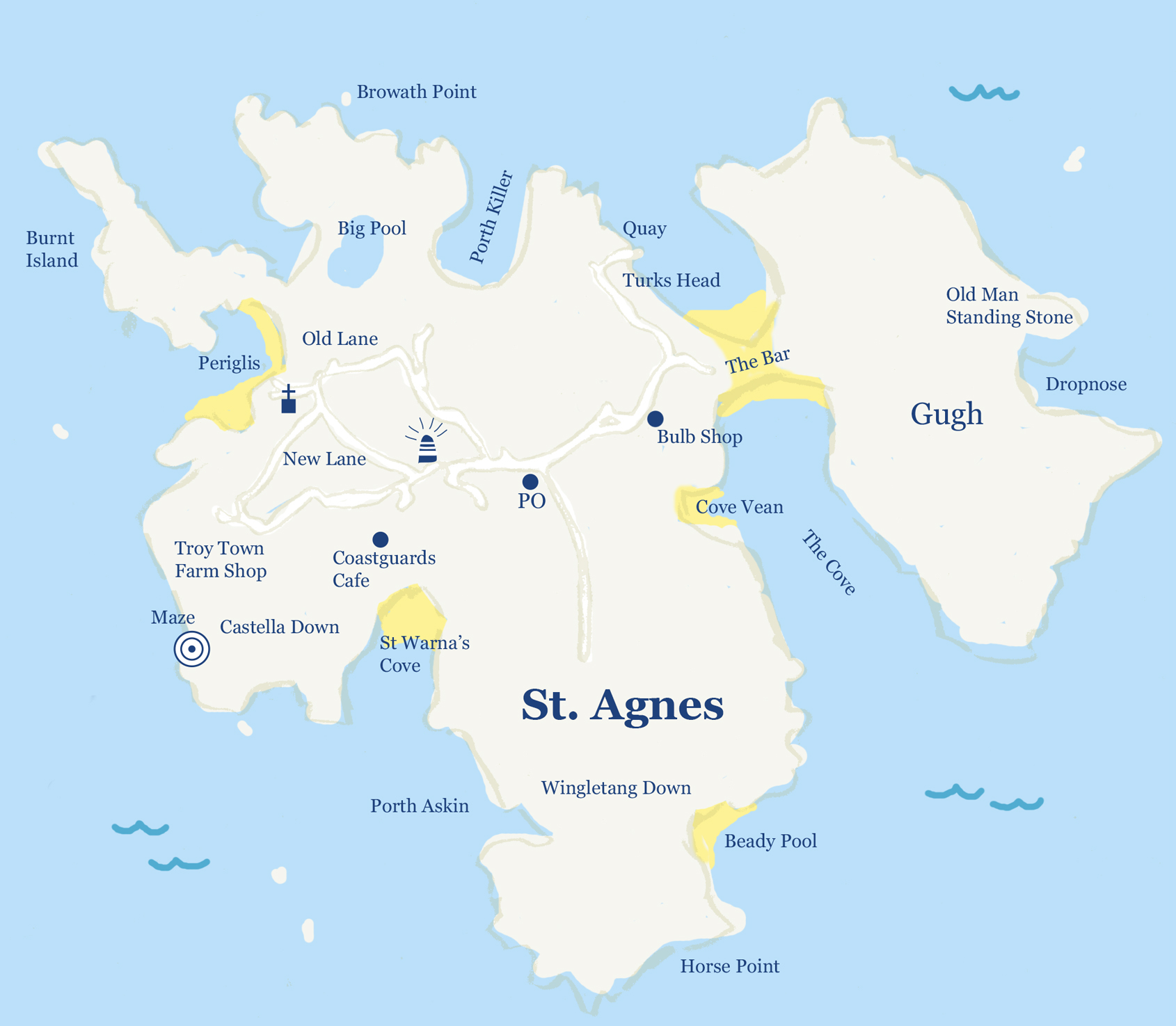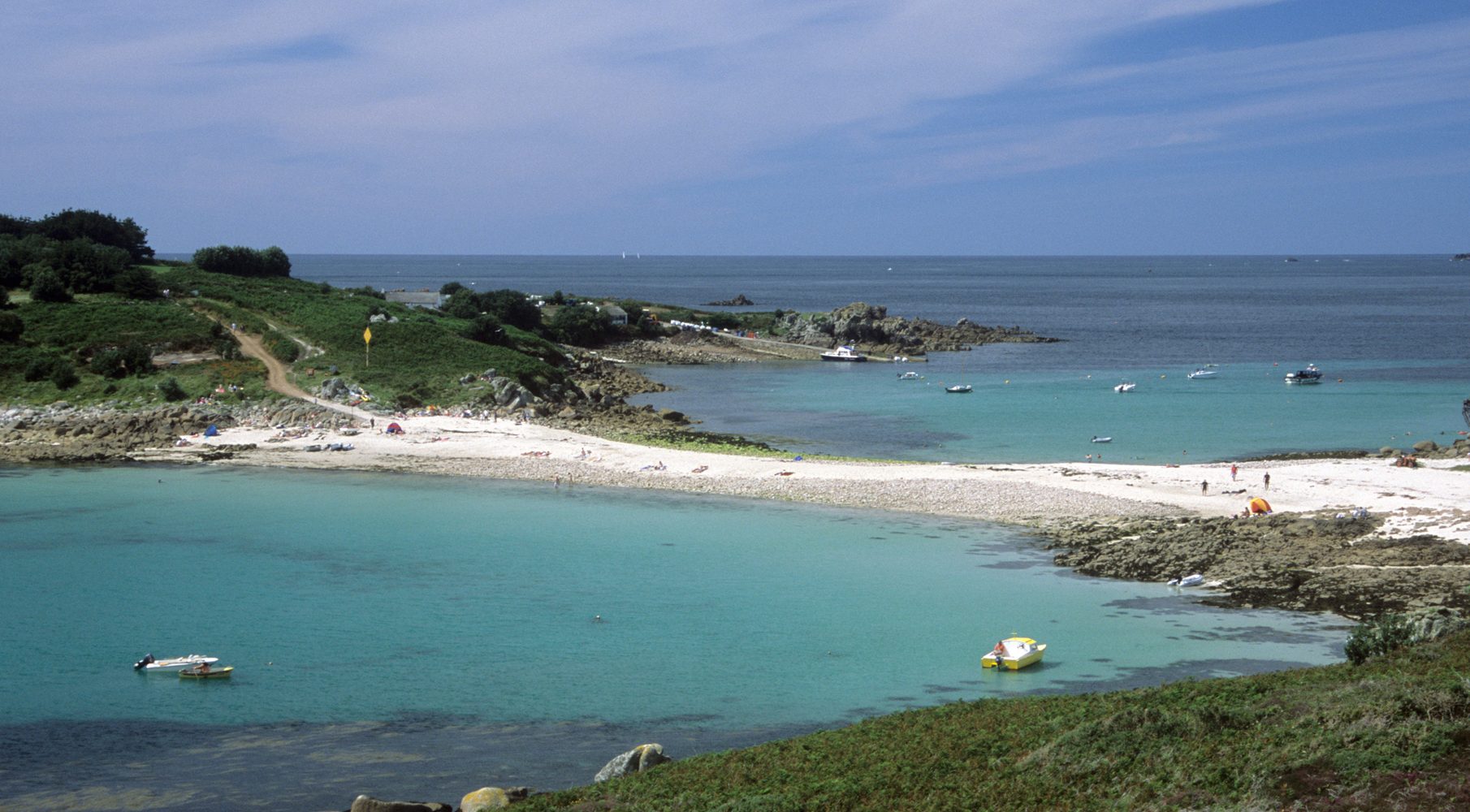St Agnes is the second smallest of the inhabited islands in the Scilly archipelago, measuring approximately 1 mile across. The island’s distinctive white lighthouse makes it easy to spot from afar. St Agnes is in equal parts tranquil and rugged; from the granite carns of the western coast, shaped by the Atlantic, to the lovely fields of wild flowers inland.
St Agnes is joined to the smaller island of Gugh (pronounced Goo) by a sandbar that only shows at low tide. Gugh is a great island to explore, with its striking rock formations, like the Old Man of Gugh, but make sure you’re back on St. Agnes before the sand bar covers! When exposed the sandbar is a beautiful spot to sunbath and swim from. Other notable beaches on St. Agnes include Periglis, Covean and Beady Pool.
The waters around St Agnes are littered with the wrecks of ships that sailed too close to the numerous rocks of the nearby Western Isles. Perhaps the most well known is Admiral Sir Cloudesley Shovell’s flagship vessel, the Association, that went down in rough seas on Gilstone Reef in 1707. Today Annett and the Western Isles are important protected wildlife sanctuaries, home to numerous colonies of seabirds.
The small community on St Agnes makes all kinds of exciting local products, from arts & crafts and hand-made soap to home grown veg and locally produced chocolate, ice cream and milk. Also worth a visit is the pub, the Turks Head. This is the most south-westerly pub in the UK and a great spot for food, drink and stunning sea views.



